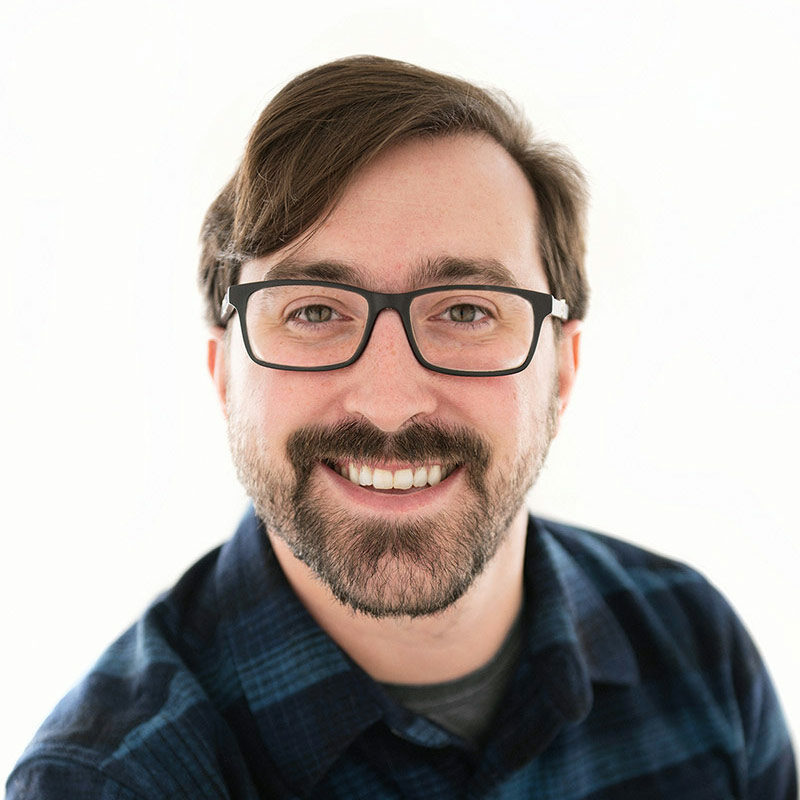Even after dominating the city’s headlines and conversations for years, there’s still plenty that people don’t know about the Dontre Hamilton case. Milwaukee filmmaker Erik Ljung aims to fix that with his documentary "The Blood is at the Doorstep," the centerpiece selection of the Milwaukee Film Festival – and he doesn’t expect it to be easy.
"We don’t want this to be a comfortable screening," Ljung explained. "We want people to come with an open mind and hopefully take away something different then what they expected this family to be or what they expected the facts of the case were.
"It’s a controversial case here in Milwaukee, and people have strong feelings about it. I’m not expecting everybody to love everything that’s in the film; I think a lot of people on all sides are going to be uncomfortable at certain parts. But I think we told the story in a way that was fair to everybody, and we let people speak for themselves."
An unfinished cut of the film – following the Hamilton family in the aftermath of Dontre’s fatal officer-involved shooting in Red Arrow Park – previously premiered this year at South By Southwest, earning a strong review from The Hollywood Reporter. Tonight’s 7 p.m. sold-out centerpiece screening at the Oriental Theatre, however, marks the first showing of its final cut – as well as its return to the city its story tragically calls home.
Before the film rolls and the discussion begins, we talked with Ljung about how he got involved with the Hamilton family, getting a full-length dox off the ground, and compacting a complex and catastrophic story into feature-length form.
OnMilwaukee: When did you get involved with the story and with the Hamilton family?
Erik Ljung: I think like everybody else in Milwaukee, I heard about it the day it happened. I was digesting all the news for weeks after that. And like everyone else in Milwaukee, I think the thing that stood out most was the number of shots and where it happened. Everybody’s familiar with that park; I used to play pond hockey afterhours in the park all the time. So it’s a very public park in the heart of Downtown.
And then the number of shots and it was in response to an non-emergency wellness check. And the fact that police officers had come twice before and determined he’d done nothing wrong. So there were a lot of elements to it that left a lot of questions. And the police department’s response the next day kind of set the narrative from the very beginning. I was interested to understand what it was like for a family, what was their perspective on what was going on.
At first, I mean, how do you approach a family like that?
That was literally my next question.
I’m in film, and I do this kind of thing for a living – for hire for ad agencies and for commercials and stuff like that – but I didn’t really know how to approach the family. It’s intimidating. They’re going through the worst experience of their lives, and who am I to butt into their lives and stick a camera in their face. They’ve already had enough of that. So I thought about it all the time; I thought about it for months before I really got involved.
It wasn’t until they really started holding public rallies at the end of the summer of 2014. When they held their first major rally, that’s when I went and met the family. And at first, it was really a slow burn. At first, I was just filming them doing rallies, but then they got comfortable with me and I got comfortable with them. We did a sit-down interview, and that really progressed into just following them in their daily life, like a behind-the-scenes type thing.
My intentions in the beginning weren’t necessarily to make a feature-length film. It was just … I don’t know; I felt I needed to be there and cover what was happening. Because a lot of what was happening on the streets and in City Hall meetings I wasn’t really seeing on the news. On the news, you get 30 or 45 seconds to tell a news story, and there’s so much more that was going on that I wasn’t seeing in the clips.
I just felt that the story needed to be told in a more full way. Having said that, I’m still taking three years of stories and boiling it down to 90 minutes with the help of my editor Michael Vollmann. So even then, there’s a lot that’s left out. But you do the best that you can.
OnMilwaukee: Yeah, because this started with a New York Times short doc, right?
It came about because my connections were in news journalism circles. I freelance for a lot of these places, but I never had really done an independent documentary film. And it takes a lot of money to do. I’m having to take time from work to work on this, and there’s a lot of hard costs that you can’t avoid – equipment and hiring people to help. I was trying to raise money, and it wasn’t really going well. So I started pitching the story to news outlets in order to bring some money in to keep working on the project – and also just to put a focus on this, because this is a case that didn’t get a lot of national attention.
Yeah, huge here, but national wide, comparatively, it was less covered.
You heard things here or there, but not much. Dontre’s photo was not one that rang in people’s minds when you showed them on a national level. "Yeah, it sounds kind of familiar," that was about the extent of what you got.
But I think the Hamilton case really was a litmus test for a lot of things. What got me really interested in the case early on was that this was the first case in the country that fell under mandatory outside investigation law, the Michael Bell law. So that was fascinating to me because we started this project before Ferguson and all those things, but as it went on, a lot of states were looking at how do we deal with these situations so we don’t have a Ferguson. A lot of them were interested in possibly adopting these outside investigation laws that reduce conflicts of interest. And this was the first time that was ever being tested.
And the Milwaukee Police Department, throughout this process, adopted body cameras and have all officers mental health trained. So there’s a lot of things that were changing here that we saw it affected policing investigations here. Sylville Smith would’ve been an open and closed case, but now that he had a body camera, he gets charged. He didn’t get convicted, but I think it adds more transparency to the process.
When did you realize that you had a feature-length documentary here, not just a short?
I think around the time we had probably around 300-400 hours of footage, I was like, "We should probably do something more substantial with this." Because I was just collecting footage with no editing at that time; I was just building a mountain of footage. Then Michael Vollmann came on, and he’s been editing this for a very long time. I think he got involved in early 2015, so this has gone through a lot of iterations and culling 500 hours of footage between himself and myself.
And we both work. He has a full-time job and a family, and I’m on the road pretty extensively with freelance work, so it’s trying to do this on nights and weekends, and find the time to make this happen. We premiered the film six months ago at South By Southwest.
Congratulations on that.
Yeah, but the film really wasn’t where we hoped it would be by then. We’re submitting to film festivals prematurely because they’re months in advance, and you have time to keep working on them. But we didn’t get as far as we hoped. For the first time, I feel like the film is finally in the place we wanted it to be six month ago. So this is the final cut of the film, and this is the first time it’s going to be seen publicly. We haven’t even seen it yet because we’re still tweaking it out.
But it should be a really special moment. We’ve been working on this for three years as a film, but also for the family, for the subject matter and for the city. This has been the major news story in Milwaukee for the last three years – and the country has been focused on this issue for the last three years. And the film provides an opportunity to look a little more in-depth and maybe challenge some people’s assumptions on all sides.
As much as it is a gigantic cliché to say that one has always had a passion for film, Matt Mueller has always had a passion for film. Whether it was bringing in the latest movie reviews for his first grade show-and-tell or writing film reviews for the St. Norbert College Times as a high school student, Matt is way too obsessed with movies for his own good.
When he's not writing about the latest blockbuster or talking much too glowingly about "Piranha 3D," Matt can probably be found watching literally any sport (minus cricket) or working at - get this - a local movie theater. Or watching a movie. Yeah, he's probably watching a movie.







